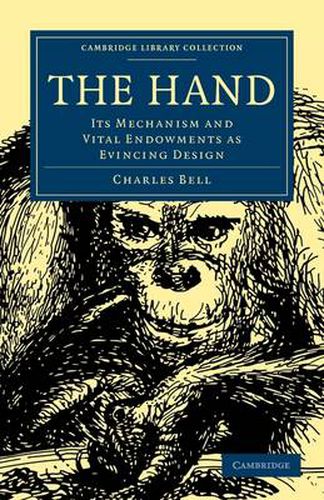Readings Newsletter
Become a Readings Member to make your shopping experience even easier.
Sign in or sign up for free!
You’re not far away from qualifying for FREE standard shipping within Australia
You’ve qualified for FREE standard shipping within Australia
The cart is loading…






This 1833 study of the hand by Sir Charles Bell, a leading professor of surgery and anatomy, is one of the Bridgewater Treatises, which arose from the preoccupation of nineteenth-century Christians with interpreting God’s creation in the light of contemporary scientific developments. Bell’s treatise suggests that by looking in close detail at small subjects, God’s role in creation can be clearly seen, whereas more general studies of the universe and the great natural cycles of astronomy and geology can obscure the intelligence behind their specific features. Bell stresses the importance of the hand in human history, the progress of society and the development of technology and design. He considers aspects of the mechanical systems of other animals, and sees their structure as a product of their function. This comparison serves to link humans with other creatures, but also defines their superiority through the sublimity of design.
$9.00 standard shipping within Australia
FREE standard shipping within Australia for orders over $100.00
Express & International shipping calculated at checkout
This 1833 study of the hand by Sir Charles Bell, a leading professor of surgery and anatomy, is one of the Bridgewater Treatises, which arose from the preoccupation of nineteenth-century Christians with interpreting God’s creation in the light of contemporary scientific developments. Bell’s treatise suggests that by looking in close detail at small subjects, God’s role in creation can be clearly seen, whereas more general studies of the universe and the great natural cycles of astronomy and geology can obscure the intelligence behind their specific features. Bell stresses the importance of the hand in human history, the progress of society and the development of technology and design. He considers aspects of the mechanical systems of other animals, and sees their structure as a product of their function. This comparison serves to link humans with other creatures, but also defines their superiority through the sublimity of design.